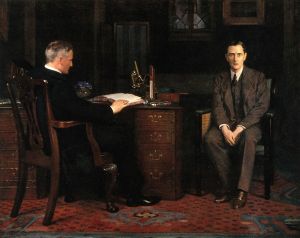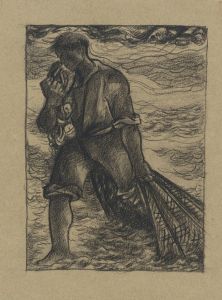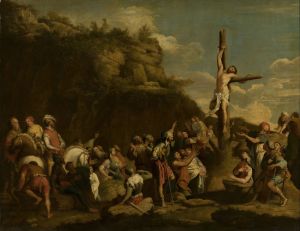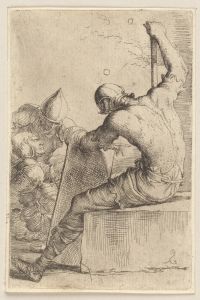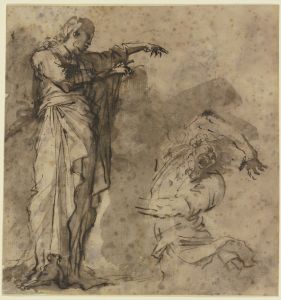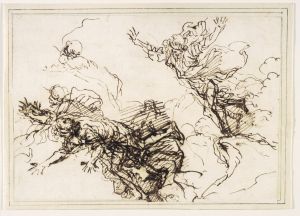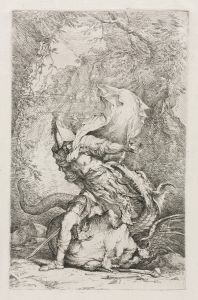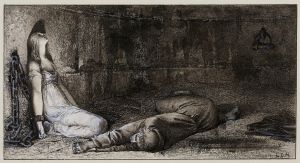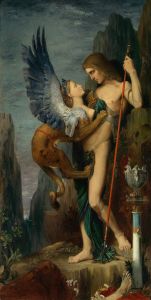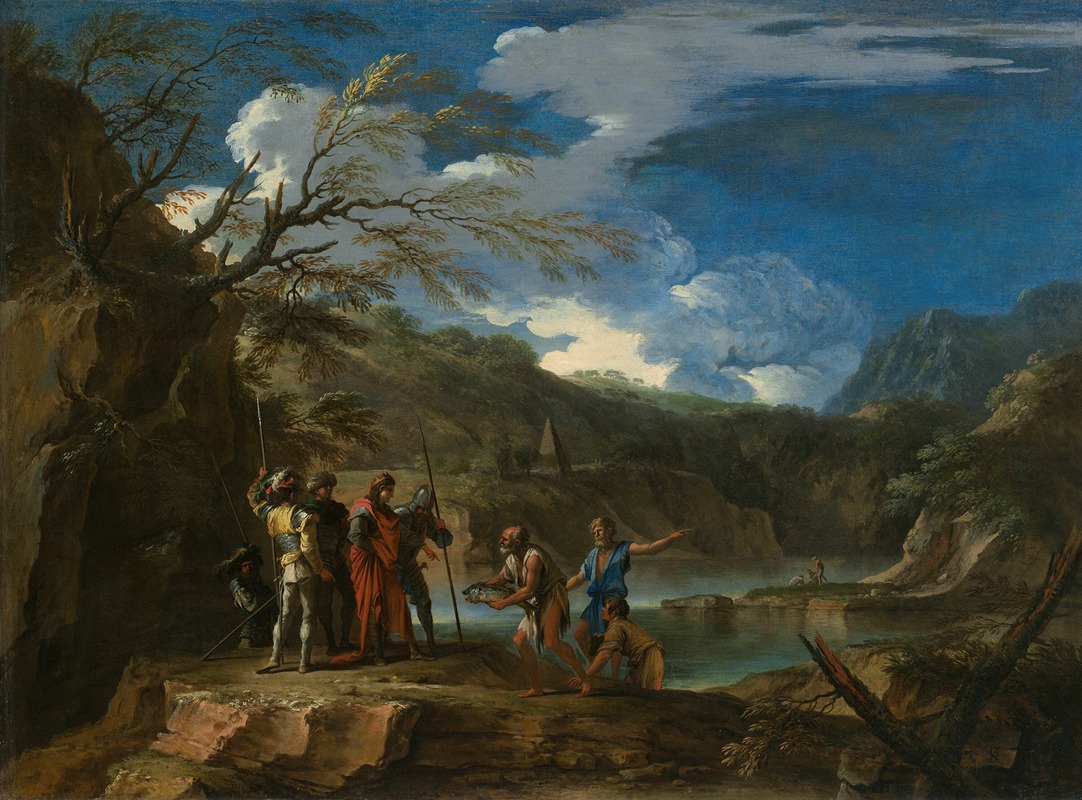
Polycrates and the Fisherman
A hand-painted replica of Salvator Rosa’s masterpiece Polycrates and the Fisherman, meticulously crafted by professional artists to capture the true essence of the original. Each piece is created with museum-quality canvas and rare mineral pigments, carefully painted by experienced artists with delicate brushstrokes and rich, layered colors to perfectly recreate the texture of the original artwork. Unlike machine-printed reproductions, this hand-painted version brings the painting to life, infused with the artist’s emotions and skill in every stroke. Whether for personal collection or home decoration, it instantly elevates the artistic atmosphere of any space.
"Polycrates and the Fisherman" is a painting by the Italian Baroque artist Salvator Rosa, created around 1662-1663. Salvator Rosa was known for his dramatic and often darkly romantic landscapes, as well as his historical and allegorical subjects. This particular painting is an excellent example of his ability to blend narrative with a powerful visual style.
The painting depicts a scene from the life of Polycrates, the tyrant of Samos, as recounted by the ancient historian Herodotus. According to the story, Polycrates was extraordinarily fortunate, which worried his ally, Amasis, the Pharaoh of Egypt. Amasis advised Polycrates to throw away his most valued possession to appease the gods and avoid their jealousy. Polycrates chose to throw a precious ring into the sea. However, a fisherman later caught a large fish and, upon cutting it open, discovered the ring inside. He presented the fish and the ring to Polycrates, who interpreted this as a sign that he could not escape his fate.
In "Polycrates and the Fisherman," Rosa captures the moment when the fisherman presents the fish to Polycrates. The composition is dramatic, with strong contrasts of light and shadow typical of the Baroque style. Polycrates is depicted in a regal manner, emphasizing his status and wealth, while the fisherman appears humble and respectful. The background features a dark, stormy sky, adding to the tension and foreboding atmosphere of the scene.
Rosa's use of chiaroscuro (the contrast between light and dark) enhances the emotional intensity of the painting. The light falls on Polycrates and the fish, drawing the viewer's attention to the central elements of the story. The detailed rendering of the figures and their expressions conveys the gravity of the moment and the underlying themes of fate and fortune.
Salvator Rosa was not only a painter but also a poet, actor, and musician, which influenced his approach to art. His works often contain a theatrical quality, as seen in "Polycrates and the Fisherman." Rosa's ability to convey complex narratives through his paintings made him a significant figure in the Baroque period.
The painting is currently housed in the Gemäldegalerie Alte Meister in Dresden, Germany. It remains an important work for its artistic merit and its illustration of a classical story through the lens of Baroque sensibilities. Rosa's "Polycrates and the Fisherman" continues to be studied and admired for its technical skill, emotional depth, and historical significance.






